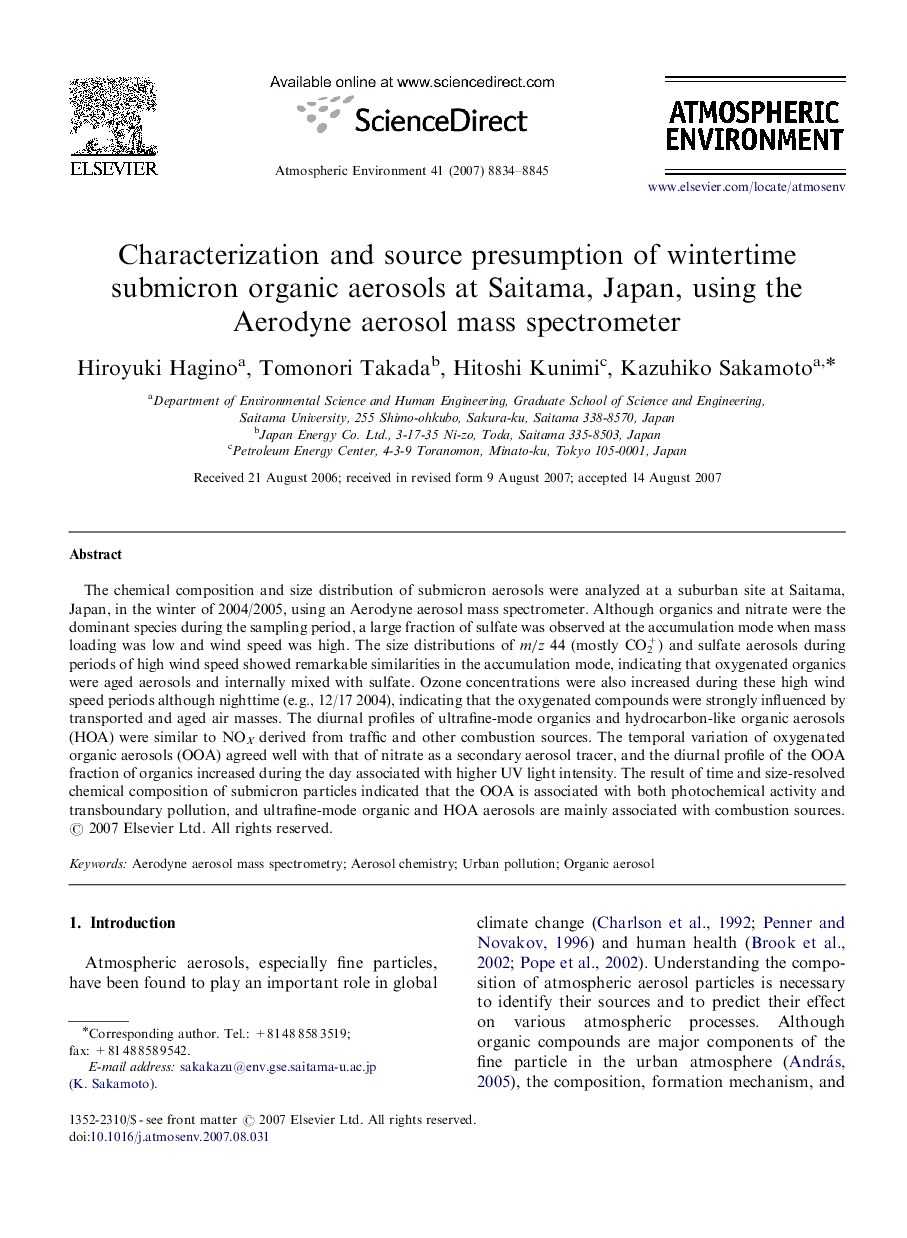| Article ID | Journal | Published Year | Pages | File Type |
|---|---|---|---|---|
| 4443132 | Atmospheric Environment | 2007 | 12 Pages |
The chemical composition and size distribution of submicron aerosols were analyzed at a suburban site at Saitama, Japan, in the winter of 2004/2005, using an Aerodyne aerosol mass spectrometer. Although organics and nitrate were the dominant species during the sampling period, a large fraction of sulfate was observed at the accumulation mode when mass loading was low and wind speed was high. The size distributions of m/z 44 (mostly CO2+) and sulfate aerosols during periods of high wind speed showed remarkable similarities in the accumulation mode, indicating that oxygenated organics were aged aerosols and internally mixed with sulfate. Ozone concentrations were also increased during these high wind speed periods although nighttime (e.g., 12/17 2004), indicating that the oxygenated compounds were strongly influenced by transported and aged air masses. The diurnal profiles of ultrafine-mode organics and hydrocarbon-like organic aerosols (HOA) were similar to NOX derived from traffic and other combustion sources. The temporal variation of oxygenated organic aerosols (OOA) agreed well with that of nitrate as a secondary aerosol tracer, and the diurnal profile of the OOA fraction of organics increased during the day associated with higher UV light intensity. The result of time and size-resolved chemical composition of submicron particles indicated that the OOA is associated with both photochemical activity and transboundary pollution, and ultrafine-mode organic and HOA aerosols are mainly associated with combustion sources.
